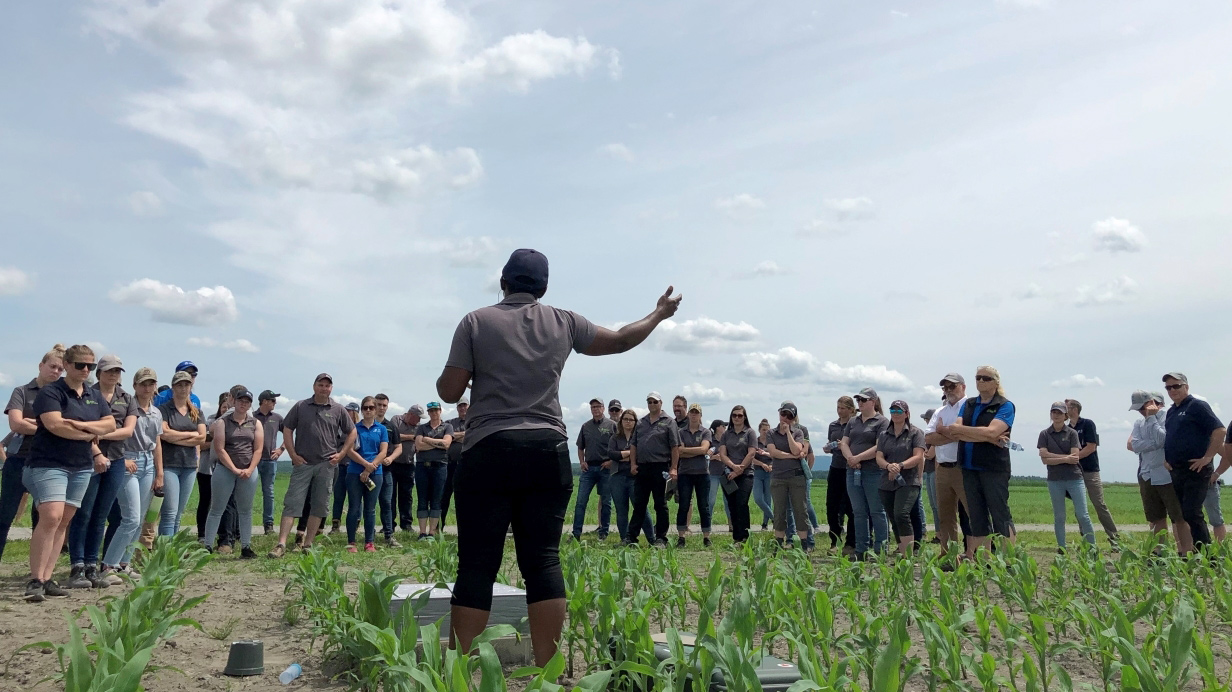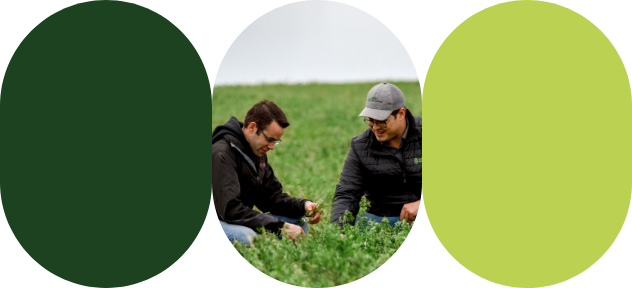A soil-analysis probe to reduce greenhouse gases
Analyzing soil in the field with a smart probe may not be such a distant dream after all. For some time now, staff at the Sollio Agriculture crop production research farm in Saint-Hyacinthe have been testing a probe from ChrysaLabs that could be used to adjust farming practices quickly and improve crop fertilization.
For the past two years, members of the research farm’s team have been lugging ChrysaLabs’ futuristic-looking, smart soil-analysis probe around their plots.
The probe can provide soil analysis results without the delays associated with transporting samples to laboratories and carrying out analyses. Getting results this quickly is appealing and opens up a world of possibilities for the team led by Lucie Kablan, Researcher in Innovation and Sustainable and Organic Agriculture at the research farm.
Kablan is particularly interested in technologies that can help reduce greenhouse gases (GHGs). For several years, staff at the Sollio Agriculture research farm have been looking at ways to reduce GHG emissions without compromising the profitability of farm businesses. They have explored cover crops, satellite imagery, and colorimetric analysis of corn stalks to assess nitrogen and other elements. Now, their trials are focusing on the ChrysaLabs probe.
“The ChrysaLabs probe is not currently approved, but we are working with several other partners to calibrate it,” says Kablan. “If it’s approved in Québec soon, we could use it to make recommendations.”
With a probe that can analyze soil in the field in real time, it will be much easier to adjust post-emergence fertilization in field crops, for example.
“Right now, if farmers want to fertilize their corn exactly as it needs to be fertilized post-emergence, they need a nitrate analysis,” explains Kablan. “With the time it takes to get results from a lab analysis, it’s difficult to make timely adjustments in the field. With a smart probe, we would be able to make recommendations based on the individual needs of each crop and possibly reduce the amount of fertilizer needed, all within a few days of the work being done.”
Precise results for every plot
Kablan says that, with a little time, you can even analyze different plots and obtain individual rates for each one. This means that, in addition to the agronomic benefits of better fertilization, farmers can meet the GHG reduction targets associated with the use of synthetic fertilizers.
The economic benefits of using less fertilizer are also significant, given the market price of fertilizer lately.
The ChrysaLabs probe’s ability to quickly identify which elements are present in the soil could be useful not only for corn but also for grain and horticultural crops.
“We’re really talking about precision agriculture,” says Kablan. “The samples are georeferenced, and the data from them can be compiled into a spreadsheet to give us valuable information about our soils. Many different crops can benefit from this technology, which can be used to fertilize crops precisely or measure the mineralization of different elements after applying organic fertilizer in the fall.” The information collected could also be used to produce variable-rate fertilization maps.
Using the probe to measure element mineralization—the rate at which elements in manure become available to plants—could help farmers make better decisions, as there are several factors that affect organic fertilizer, and variability is often observed in the field.
Toward the market launch of the ChrysaLabs probe
As mentioned above, the ChrysaLabs probe has not yet been approved for use in our fields. According to Kablan, if the probe becomes part of everyday life in our fields, it is very likely that the collected data will require the interpretation of an agronomist in order to formulate recommendations.
Field data from the probe over the past two years will be compared with data from traditional soil analyses. All results will then be analyzed with those of other testers in Ontario. No date has been set for the probe’s approval, but “the ChrysaLabs team is working hard to get it approved for use,” says Kablan.
Source: The original version of this article was published in French in Coopérateur magazine.



